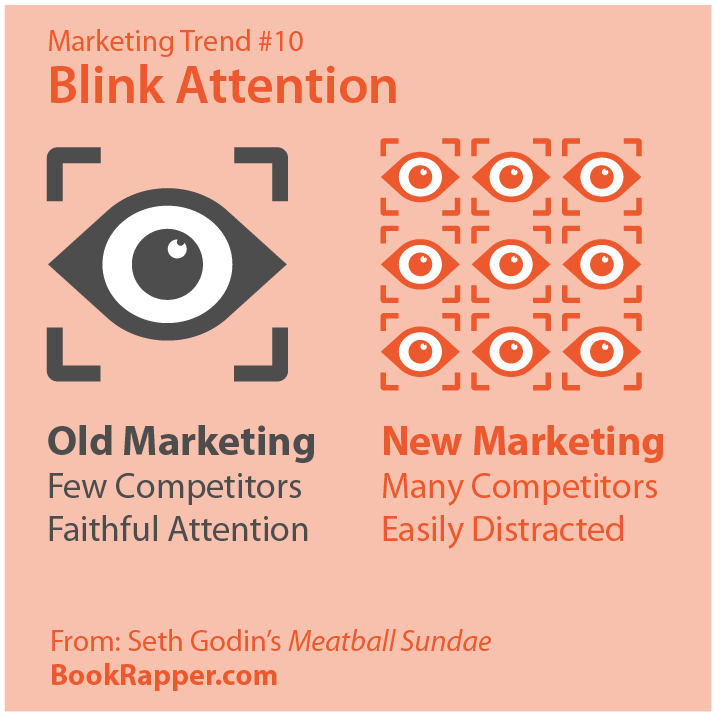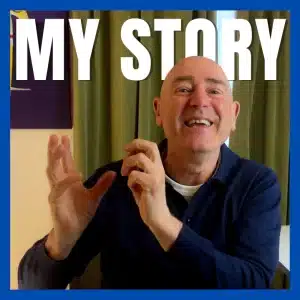
This is marketing trend #10 in a series of 14 marketing trends adapted from Seth Godin’s book Meatball Sundae. Previously in this series: Authentic Stories
Blink Attention
One of the powerful elements of Old Marketing was the relatively few competing messages. You could buy up a few slots on your favourite TV channel and lots of people would faithfully sit and watch; there weren’t many other channels to switch over to.
In the New Marketing era, there is huge competition from multiple media and that means the amount of time we’re willing to spend on some thing – particularly some thing we have zero interest in – shrinks too.
Research suggests the average web surfer spends about 10 seconds working out if they want to look at your site. That’s blink attention. If you fail to grab them inside those ten seconds, they simply click away. One click and they’re gone forever – to one of the millions of other sites. And then another, and then another, and then… You get the picture.
To effectively work the New Marketing you had better (a) remove the complexity and (b) simplify your message. Your customers can decide if it is worth pursuing in the blink of any eye. And they will.
[Tweet “Few channels have become millions and attention is now scarce #blink #marketingtrends”]
Source
This is from the Book Rapper issue Marketing How-Now that is derived from Seth Godin’s brilliant book Meatball Sundae.



